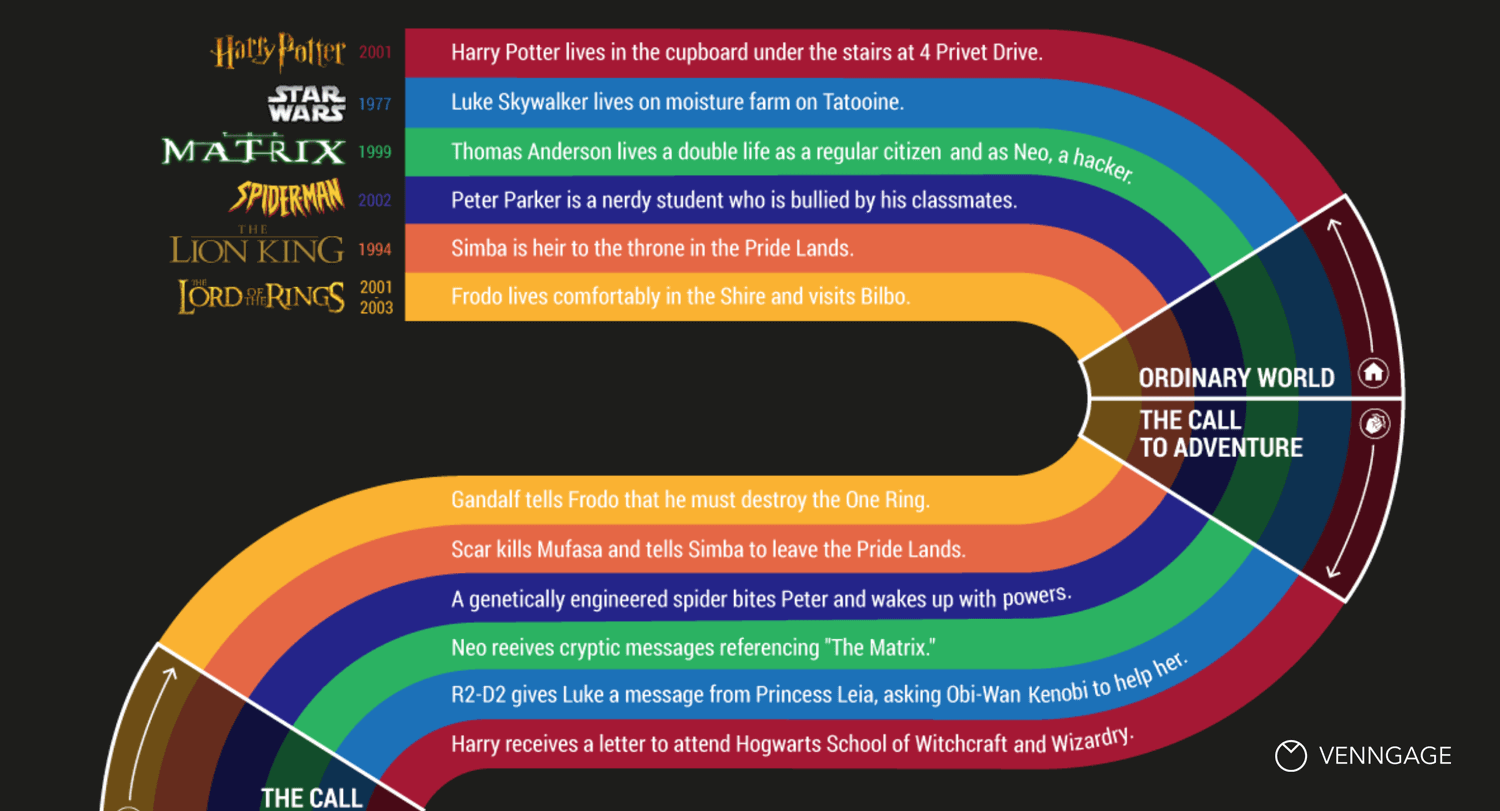Corporate Storytelling: The Story Arch
Let’s start with some definitions:
Persuasion. the act of causing people to do or believe something.
Storytelling. the art of using language, vocalization, movement, or imagery in a narrative to engage an audience or making something more clear.
Be real… How many corporate videos have you sat through that were truly inspiring? That made you feel something so overwhelming, and you were so energized, you felt like you could take on the world? Or perhaps so moving, you literally cried in the meeting watching it? Yep, same here.
Convincing customers about your services + products, or persuading employees to buy into corporate strategies is a big part of crafting a corporate narrative. But many of the videos we watch at this level are less than inspirational, many times getting lost in corporate buzzwords, slideshows, or other presentations that draw as uch excitement as watching paint dry.
So how do we fix this? What makes a great story? How do you create a corporate video or advertisement that really connects with the audience?
(Side note: Duolingo is doing it right. Check out their YouTube channel)
One big detail that can be easily overlooked is creating and understanding a story or narrative arc.
It’s the structure of a story that describes the shape or change of the main course of the narrative.
You’re already probably familiar with some:
Rags to Riches – where there is just one movement of the story – which is a steady climb throughout – leading to a happy ending.
Riches to Rags – exactly the opposite as above
The Icarus Arc – in which the movement is a rise and fall, taking from an ancient story of a boy who escaped prison with wings made of wax – then falls to his death over the sea after flying too close to the sun.
The Hero’s Journey
One of the more popular frameworks is something called the Hero’s Journey. Star Wars, Harry Potter, Lord of The Rings, The Odyssey, The Matrix, most Marvel movies all follow similar narratives. With some adjustments, it can work wonderfully for brands and corporations wanting to create engaging and powerful videos.
Let’s breakdown the main components:
The Hero (or Heroine, or Protagonist)
For brands and companies, your customer is the hero. After all, you need them to buy your product, service, or donate to your cause - so the story is for them, not for you.
Has a Desire
Your Hero desires something BUT they may or may not know it yet. After all, they are living in their ordinary world without you. This video is an opportunity to bring them outside your ordinary world and into your extraordinary one.
Has a Problem
They can’t achieve what they desire. They are in a bind and are stuck.
The Guide
You are the guide that’ll help them overcome what they are facing and get them towards what they desire
The Plan
As the guide you provide the hero with the tools and resources giving them the ability to solve the problem. These tools could be your product, your service or the knowledge you have.
Calls Them to Action + Ends In Success
With these tools your hero changes the course and solve their problem and achieve their desire.
Resolution – Achieves Desire + Avoids Failure
Your hero is happy because they achieved what they wanted.
Use the framework above to come up with different stories about your company narrative .
Here is an example of a Rosetta Stone Campaign to help French Language Learners find ways to learn and practice French in their own regions of the U.S.
Hero
A french language learner
Desire
They want to become better at speaking French so that they could be immersed in the culture.
Problem
They know going to France would be the best place to learn, but it’s expensive and far away.
Guide
Rosetta Stone: not only can the hero learn a language from home, but Rosetta Stone shows how they can speak French and experience French culture right here in the states (French Louisiana).
Plan
The Hero realizes there are French speakers, cultures, and learning opportunities accessible to them.
Call To Action
The hero finds communities and experiences that allow them to grasp French more easily.
Resolution
The hero’s problem has been resolved, and they’re happy. Tres bien!
Not too bad right? Apply this to your corporate narrative if you’re looking to improve on the attention and engagement of your employees. If you have a good story in mind, give this creative exercise a shot.
For more information on how to build a better narrative for your corporate video, check out “Building A Story Brand” by Donald Miller.
Now go forth and dominate your next corporate video – but if you still need help, hit us up!


